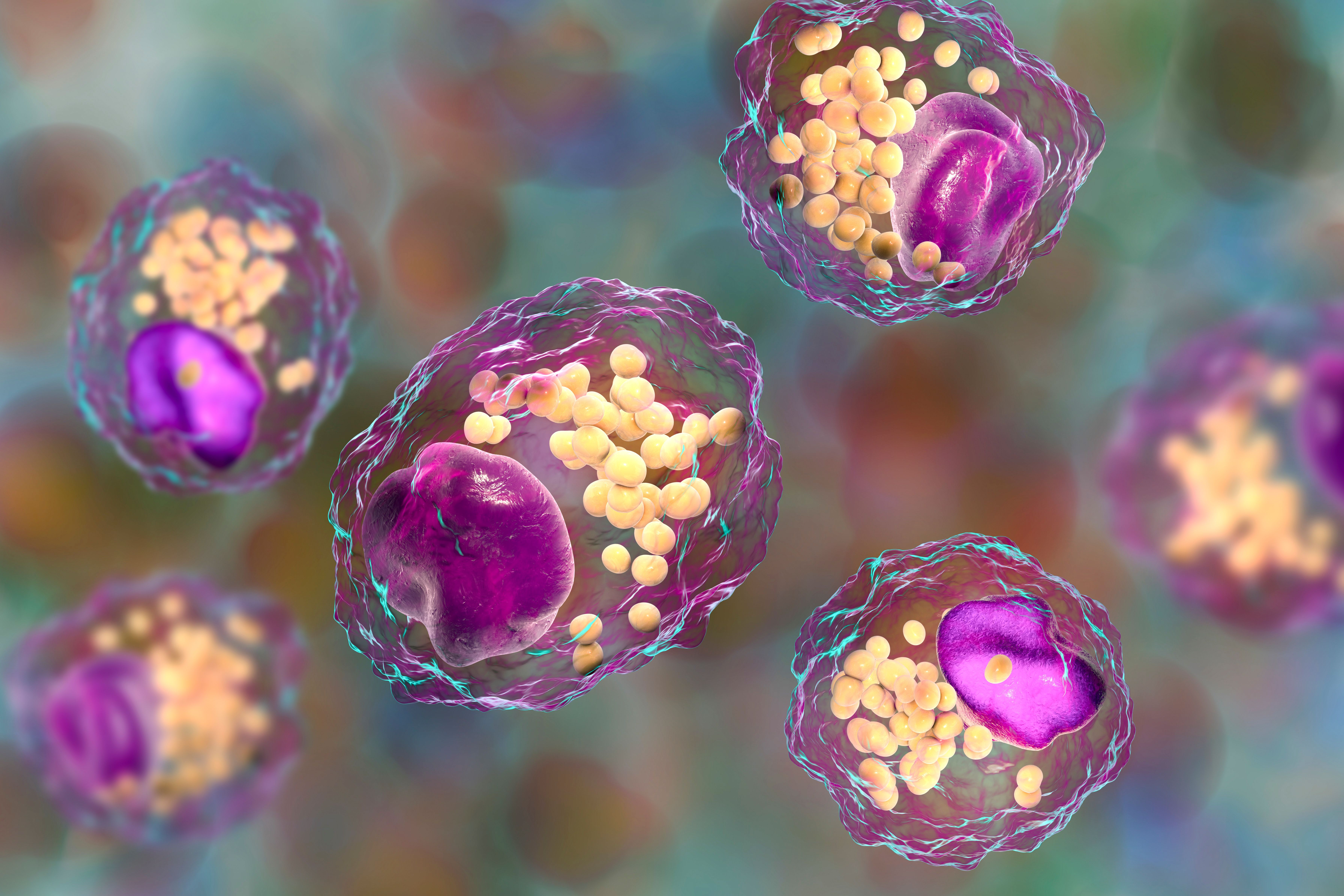Lipid Droplets and Endoplasmic Reticulum Analyzed Using Fluorescence Probe
Scientists from the University of Jinan are looking to gain a better understanding of the relationship between lipid droplets (LDs) and endoplasmic reticulum (ER) by creating a novel polarity-sensitive fluorescent probe LP and simultaneously applying it to imaging LDs and ER with dual colors (1).
Foam cell, a macrophage cell with lipid droplets | Image Credit: © Dr_Microbe - stock.adobe.com

The scientists, whose work was published in Spectrochimica Acta Part A: Molecular and Biomolecular Spectroscopy, created a system based on fluorescent analysis, which is a non-invasive, fluorescence-imaging technique that provides real-time in situ visualization of activities in living cells. Using this as a basis, they created a probe LP system to be novel and polarity-sensitive, using bearings of bearing of 3-ketone-4-hydroxy-7-(diethylamino) coumarin and N, N-diethylaniline as a fluorescent reporter with a π bridge.
Eukaryotic cells contain many organelles, each of which have their own unique forms and functions (1). LDs are spherical organelles that have been confirmed to be vital in maintaining lipid homeostasis in cells, all while participating in vital physiological activities, such as immune responses and signal transductions. LDs have also been showed to bear strong connections to other organelles, most notably ER; in fact, it is widely believed that LD generations originate from ER. This has led to discussions on the detailed mechanisms of LDs and ER in cellular activities, leading to studies like this one.
The probe LP showed well red-shifted emissions and an increase fraction of water in 1,4-dioxane due to the intramolecular charge transfer (ICT) process. As for biological imaging, the probe LP visualized LDs and ER with both green and red fluorescence separately. The system achieved the dynamic behaviors of LDs and ER using LPduring oleic acids and starvation stimulations. “Probe LP is a valuable molecular tool for investigating the relationships of LDs and ER in various cellular activities,” the scientists said in the study (1).
Reference
(1) Dai, X.; Wang, B.; Tian, M.; Wang, J.; Dong, B.; Kong, X. Development of a high polarity-sensitive fluorescent probe for visualizing the lipid droplets and endoplasmic reticulum with dual colors in living cells. Spectrochim. Acta A Mol. Biomol. Spectrosc. 2023, 301, 122973. DOI: https://doi.org/10.1016/j.saa.2023.122973
New Study Reveals Insights into Phenol’s Behavior in Ice
April 16th 2025A new study published in Spectrochimica Acta Part A by Dominik Heger and colleagues at Masaryk University reveals that phenol's photophysical properties change significantly when frozen, potentially enabling its breakdown by sunlight in icy environments.
Tracking Molecular Transport in Chromatographic Particles with Single-Molecule Fluorescence Imaging
May 18th 2012An interview with Justin Cooper, winner of a 2011 FACSS Innovation Award. Part of a new podcast series presented in collaboration with the Federation of Analytical Chemistry and Spectroscopy Societies (FACSS), in connection with SciX 2012 ? the Great Scientific Exchange, the North American conference (39th Annual) of FACSS.
Can Fluorescence Spectroscopy Evaluate Soil Dissolved Organic Matter Dynamics?
February 20th 2025A new study published in Chemical Engineering Journal by researchers from Northeast Agricultural University in China reveals that biochar aging, influenced by environmental factors like UV exposure and wet-dry cycles, alters dissolved organic matter composition and affects its effectiveness in remediating cadmium-contaminated soil.